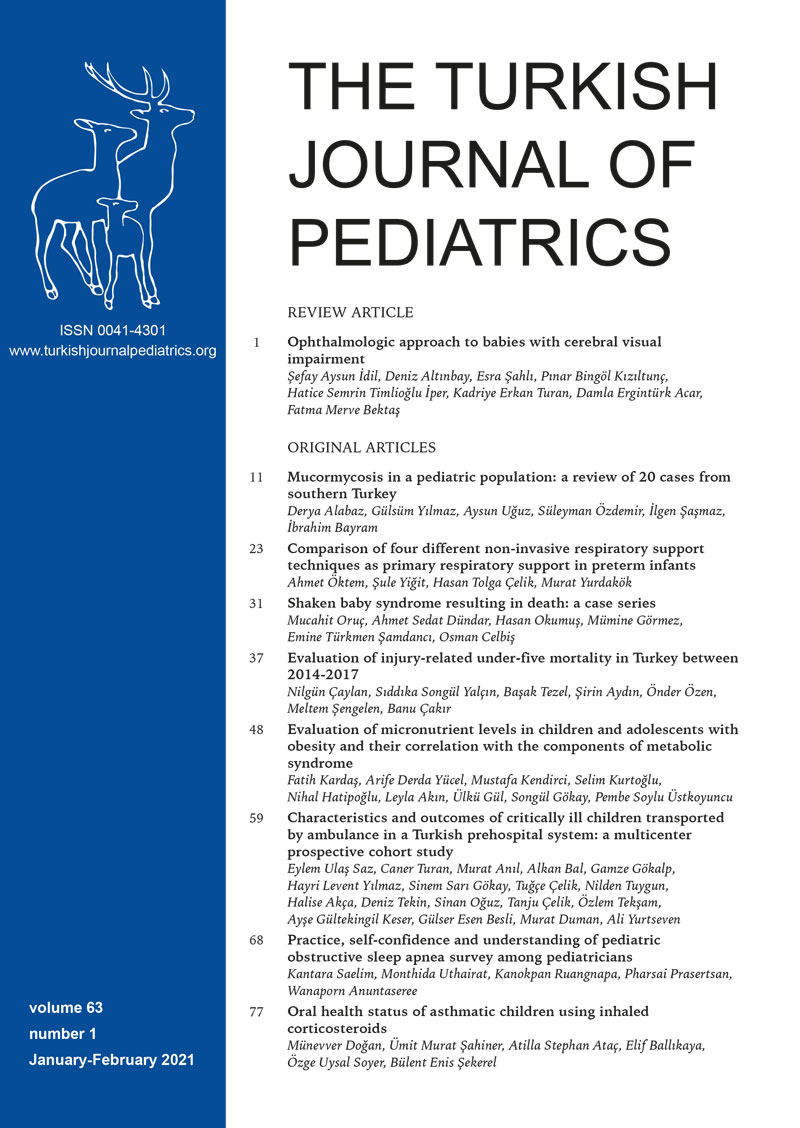Abstract
Background. Although the exact pathophysiology of functional gastrointestinal diseases remains unclear, numerous etiologies have been blamed, including visceral hypersensitivity, gastrointestinal motility disorders, psychological factors, intestinal mucosal inflammation, intestinal microbiota, and post-infectious syndromes. In the present study, we aimed to evaluate pancreatic insufficient patients diagnosed with functional abdominal pain-not otherwise specified (FAP-NOS) according to Rome IV criteria.
Methods. The study included a total of 110 patients aged 4-17 years who were diagnosed with FAP-NOS according to Rome IV criteria. The control group consisted of 80 patients with no gastrointestinal disorders and chronic diseases. Glucose, amylase, lipase, pancreatic amylase, immunoreactive trypsinogen (IRT) and fecal elastase (FE-1) levels were examined for each patient.
Results. No significant difference was found between the two groups with regard to lipase, pancreatic amylase, IRT, and serum glucose levels. However, the amylase levels were significantly higher and the FE-1 levels were significantly lower in the study group compared to the control group (p=0.007 and p < 0.001). The cut-off value detected in in ROC analysis for the diagnostic value of FE-1 in predicting FAP-NOS was found to be 140.107 μg/g. Based on this value, the sensitivity, specificity, PPV, and NPV of FE-1 were 82.1%, 66.2%, 77%, 73%, respectively. Accordingly, the likelihood of FE-1 in providing a positive value in patients with FAP-NOS was almost 9 times higher than in individuals without FAP-NOS.
Conclusions. FE-1 levels were significantly lower in children diagnosed with FAP-NOS and we consider that this difference could be attributed to malabsorption secondary to dysbiosis as there is not enough data.
Keywords: FAP-NOS, fecal elastase, pancreas insufficiency
Copyright and license
Copyright © 2021 The Author(s). This is an open access article distributed under the Creative Commons Attribution License (CC BY), which permits unrestricted use, distribution, and reproduction in any medium or format, provided the original work is properly cited.














